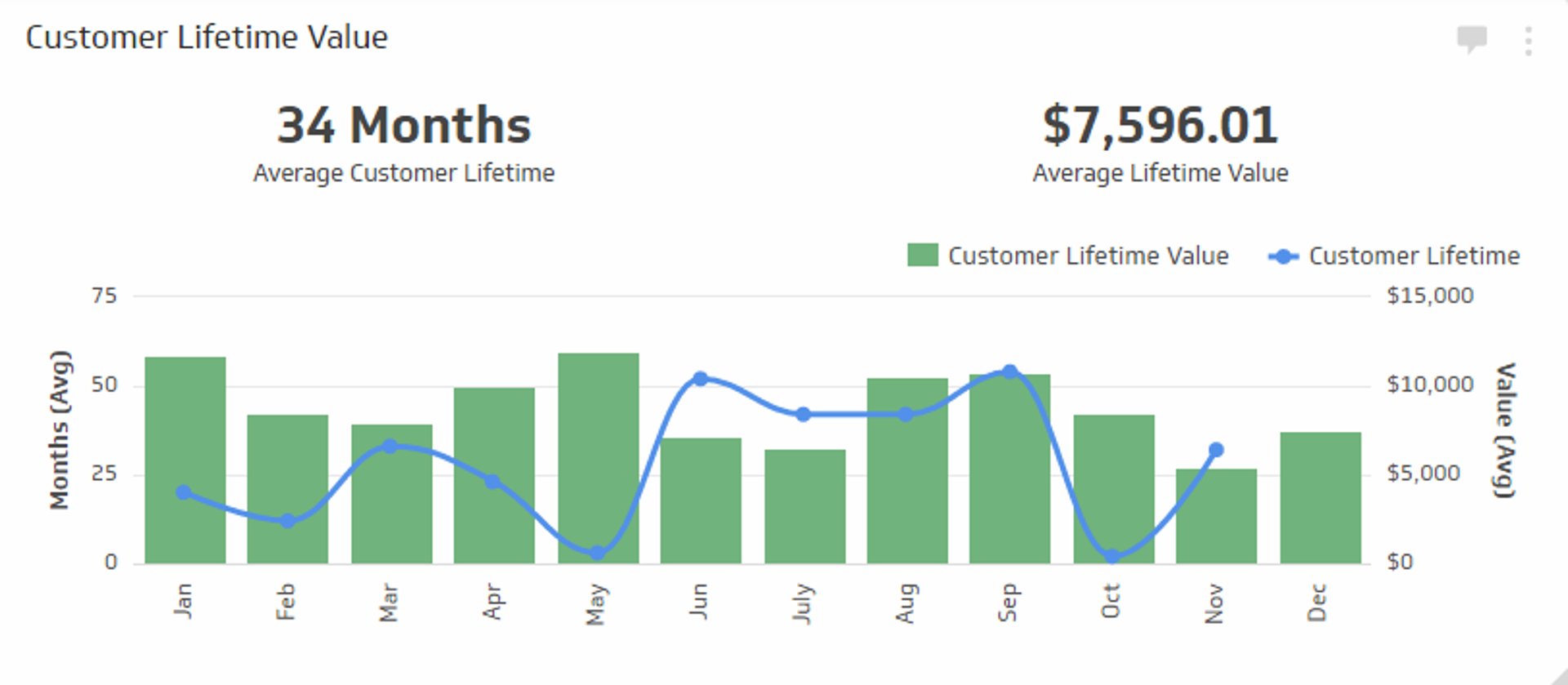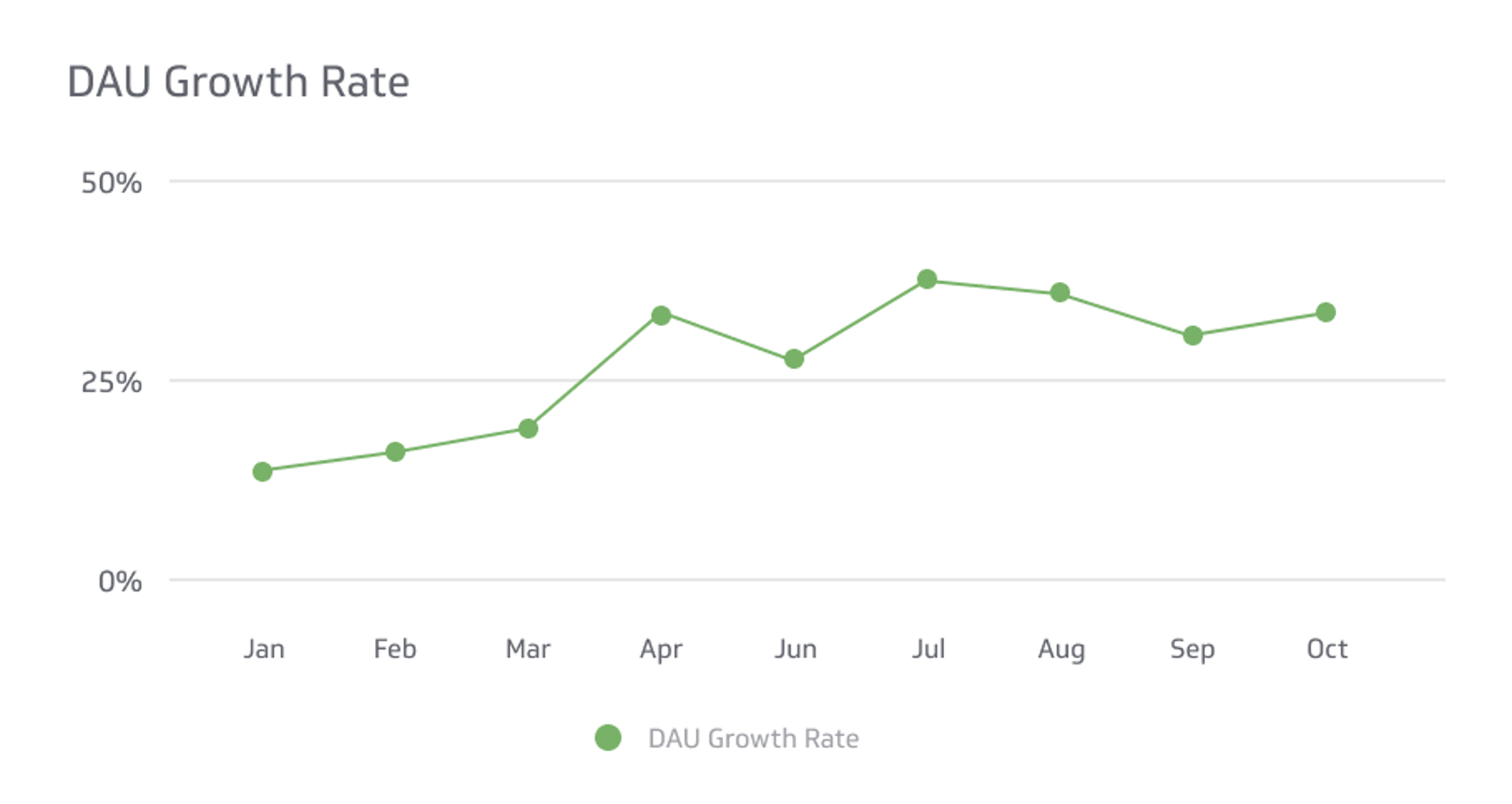Monthly Active Users (MAU)
This metric counts a digital product's popularity, reach, and user engagement.
Track all your SaaS KPIs in one place
Sign up for free and start making decisions for your business with confidence.

As a business operator, you're always looking for ways to measure the success of your product or service. You need to keep track of the key performance indicators (KPIs) to help you assess whether your business is meeting its objectives and goals.
One such KPI is Monthly Active Users (MAUs). MAUs are particularly relevant for SaaS teams, marketers, and analysts trying to measure the popularity and effectiveness of their digital platforms and services.
But what are MAUs exactly? We’ve got you covered!
In this article, we'll explore MAUs, why they're essential, and how to calculate them accurately to help improve the growth and success of your business.
Understanding Monthly Active Users
Monthly active users are a metric used to measure the number of unique individuals who engage with a particular product, service, or platform within a specific month. This SaaS metric counts a digital product's popularity, reach, and user engagement.
This metric monitors user logins, sessions, or other predefined engagement indicators, allowing businesses to effectively measure their product's user base and evaluate its growth or decline over time.
It goes beyond measuring mere downloads or installations. It focuses on actual user engagement, highlighting the number of users interacting with the product or service regularly.
Knowing the number of MAUs gives businesses insights into how engaged their users are and how well they retain them over time. If a product has many MAUs, many users engage with it and return for more.
MAUs also help businesses identify trends, patterns, and user behavior on their platform. Businesses can optimize the user experience and improve engagement by analyzing this data, leading to more revenue and growth.
Who Uses Monthly Active Users and How?
MAUs are widely used by different industries, especially for digital products such as software as a service (SaaS) solutions and social media platforms.
SaaS companies rely heavily on user engagement to drive revenue growth, and the MAU metric provides valuable insights into their digital products' performance.
This helps them identify areas where their product may need improvement, such as user onboarding, user experience, or feature development.
By tracking MAUs, SaaS companies can optimize their product to better meet their users' needs, thus generating greater income.
Social media companies like Meta and Tiktok use MAUs to measure user engagement and retention rates. These platforms use the metric to track the number of users who log in to their platform each month and interact with their content.
For Meta, an MAU should have engaged with their platforms, i.e., Facebook, Messenger, or Instagram, via the website or mobile application within 30 days.
However, things are different when it comes to Twitter. Before being acquired by Elon Musk and rebranded as X Corp, Twitter used to track monthly active users. They've since shifted their focus to "monetized daily active users" or mDAU.
In Twitter's definition, mDAU refers to individuals who consume the platform in a manner that enables the company to present them with ads.
How Do You Calculate MAUs?
To calculate monthly active users, you need to define what you mean by "active." This definition can vary depending on the product or service being measured, but generally, it refers to meaningful engagement with the product or service.
For example, an active user on a social media platform could be someone who logs in, posts, likes, or comments within the month. On the other hand, an active user of a gaming app could be someone who plays the game or engages with its features.
Then, measure the number of users that meet that definition. You can do this using analytic tools or by querying your database to count the unique users engaged with your product.
Filter the collected data to identify unique users who engaged with your product or service within the month. This step ensures that each user is counted only once, regardless of the number of interactions they had during that period.
MAUs can be tricky to calculate, as several factors can impact the accuracy of the metric. For example, if multiple people use your product or service on the same device, you may need to account for that to avoid overcounting.
Establish a consistent reporting period and methodology when calculating MAUs to ensure accurate and comparable data analysis for your company over time.
Advantages of Using MAUs as a KPI
There are several benefits to using MAUs to measure user engagement and retention, and we'll explore three of them in detail.
Easy to calculate and understand
One of the primary advantages of using MAUs as a KPI is that it’s easy to calculate and understand. Unlike more complex metrics such as customer lifetime value or net promoter score, MAUs require only basic data tracking and analysis.
This ease makes MAUs a valuable metric for businesses of all sizes and industries. Monitoring MAUs doesn't require fancy analytics tools; it can be seamlessly integrated into existing processes and systems.
This simple nature of MAUs also makes it easy to communicate the metric to stakeholders.
Investors and employees who aren't familiar with more complex KPIs will find it easy to grasp and follow MAU figures, enabling clearer discussions and evaluations of user engagement and platform performance.
Provides more info than the total number of users
Another great thing about using MAUs as a KPI is that it offers more insights than just reporting the total number of users.
MAUs give you a more nuanced view of user behavior. For instance, let's say you have 90,000 registered users. However, if only 17,000 of them are active each month, that tells you how your product is used.
They allow companies to identify fluctuations in user engagement, understand seasonal variations, and assess the impact of updates or marketing initiatives.
MAUs help your business understand what features or content drive higher user participation and tailor your strategies accordingly. This allows you to focus on improving areas that resonate with active users, thus driving user satisfaction.
Shows user growth & overall business health
Keeping track of MAUs over time lets you know whether your user base is growing or shrinking. This can be a valuable way to measure the success of marketing campaigns, product launches, and other growth initiatives.
In addition, tracking MAUs can help you gauge your business's overall health. If MAUs are consistently increasing, it may be a sign that your business is on a solid growth trajectory.
If MAUs are declining, however, it may be a sign that your business is struggling and you need to reevaluate your strategies.
This information can be helpful when it comes to making strategic decisions. For example, if you're considering rolling out a new product or expanding into a new market, tracking MAUs can help determine whether sufficient demand exists to support your growth plans.
Limitations of Using MAUs
While MAUs can be a valuable KPI for many businesses, you must understand their limitations. That way, you can decide whether or not you need to supplement it with additional metrics.
No standardized or universally accepted definition
Companies don't always have the same standards for computing MAUs. There is also a lack of industry-wide conventions for specifying significant metrics such as "active" and "user."
For example, one company may define an active user as someone who logs into their platform at least once a month. In contrast, another company may define an active user as someone who performs a particular action within their app every month.
As a result, MAUs produce inequitable comparisons between competitors. Some critics question its relevance, while others claim it should only be used with other complementary metrics, such as daily active users (DAU).
It may not accurately represent actual user engagement
Logging into a platform or app once a month doesn’t indicate how frequently or deeply users engage with or find value in the product. In this sense, MAUs can be a somewhat limited metric for understanding user engagement.
You may need to supplement other meaningful metrics, such as time spent in the app or specific actions taken, to get a more complete picture. While your metrics may appear less impressive to others, using them will give you a more accurate understanding of your user base.
Bottom Line
Monthly Active Users (MAU) play a vital role in understanding user engagement and evaluating the success of digital products and services. They provide valuable insights into how well the business’s platforms perform.
One of the key advantages of using MAUs is that it is a simple and easy-to-understand metric that can be tracked without the need for specialized analytics tools. Additionally, MAUs can provide more information than the total number of users, focusing specifically on those actively engaging with the platform.
Keep in mind the limitations of MAUs as a KPI. For example, no standardized definition of an active user can make comparing MAUs across different organizations challenging.
By understanding what MAUs represent and how to calculate them accurately, your business can use the information to make informed decisions and cultivate a thriving user base.
Related Metrics & KPIs



